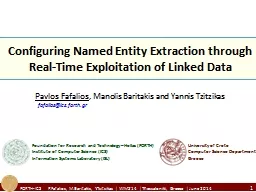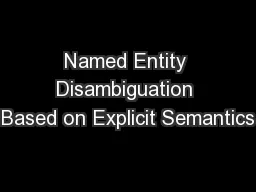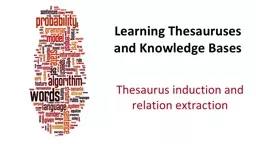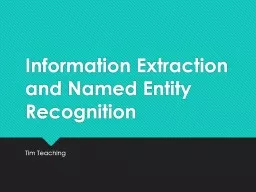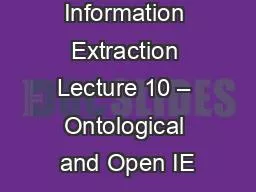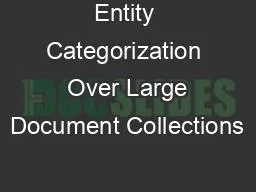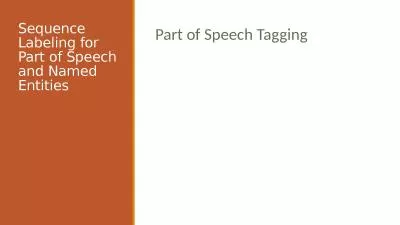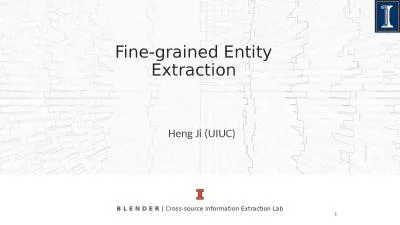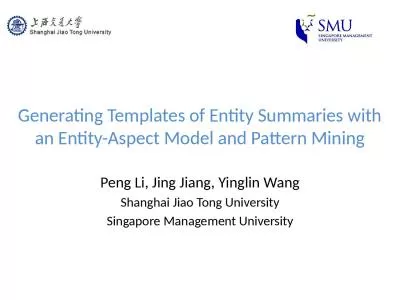PPT-Configuring Named Entity Extraction through
Author : faustina-dinatale | Published Date : 2017-04-20
RealTime Exploitation of Linked Data University of Crete Computer Science Department Greece Foundation for Research and Technology Hellas FORTH Institute of Computer
Presentation Embed Code
Download Presentation
Download Presentation The PPT/PDF document "Configuring Named Entity Extraction thro..." is the property of its rightful owner. Permission is granted to download and print the materials on this website for personal, non-commercial use only, and to display it on your personal computer provided you do not modify the materials and that you retain all copyright notices contained in the materials. By downloading content from our website, you accept the terms of this agreement.
Configuring Named Entity Extraction through: Transcript
Download Rules Of Document
"Configuring Named Entity Extraction through"The content belongs to its owner. You may download and print it for personal use, without modification, and keep all copyright notices. By downloading, you agree to these terms.
Related Documents

